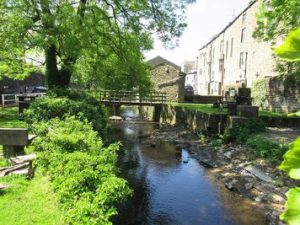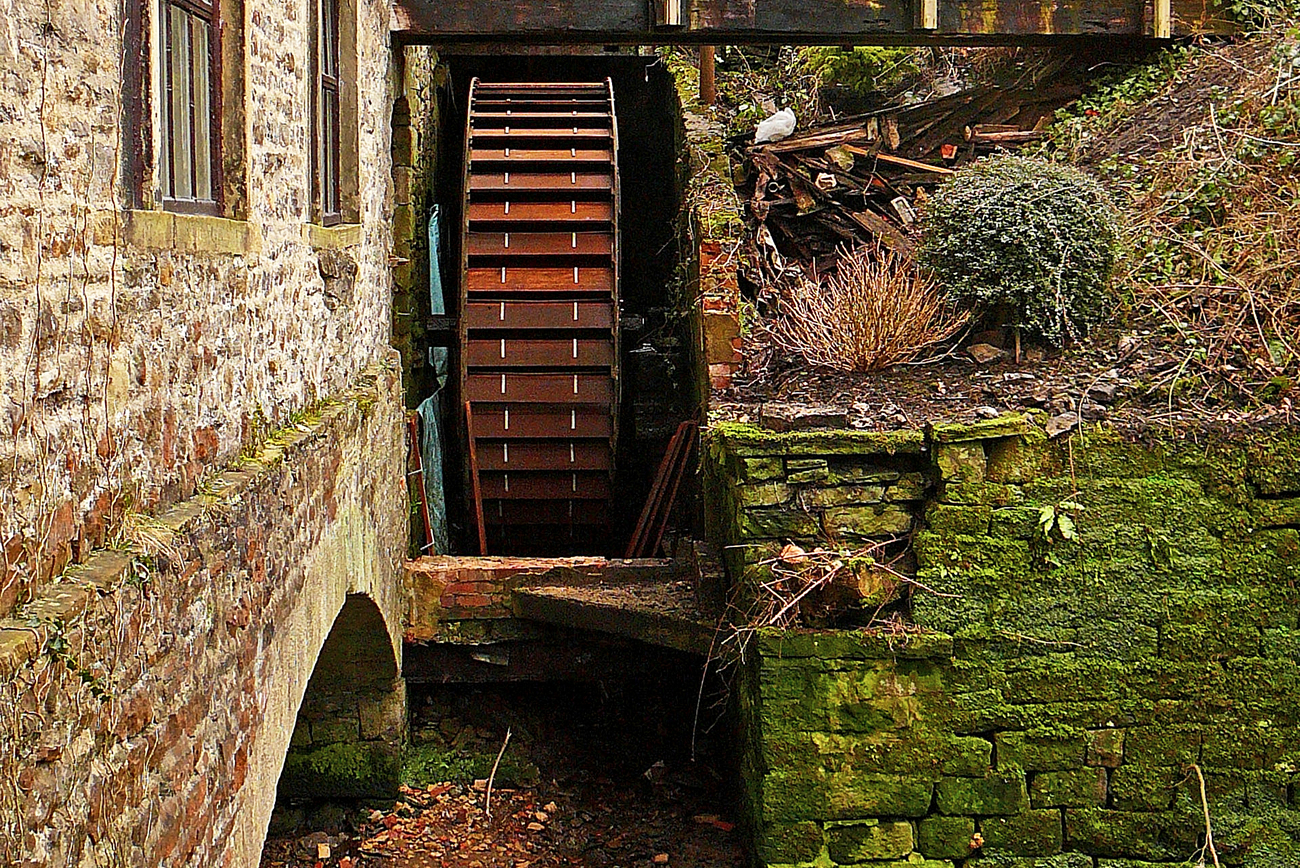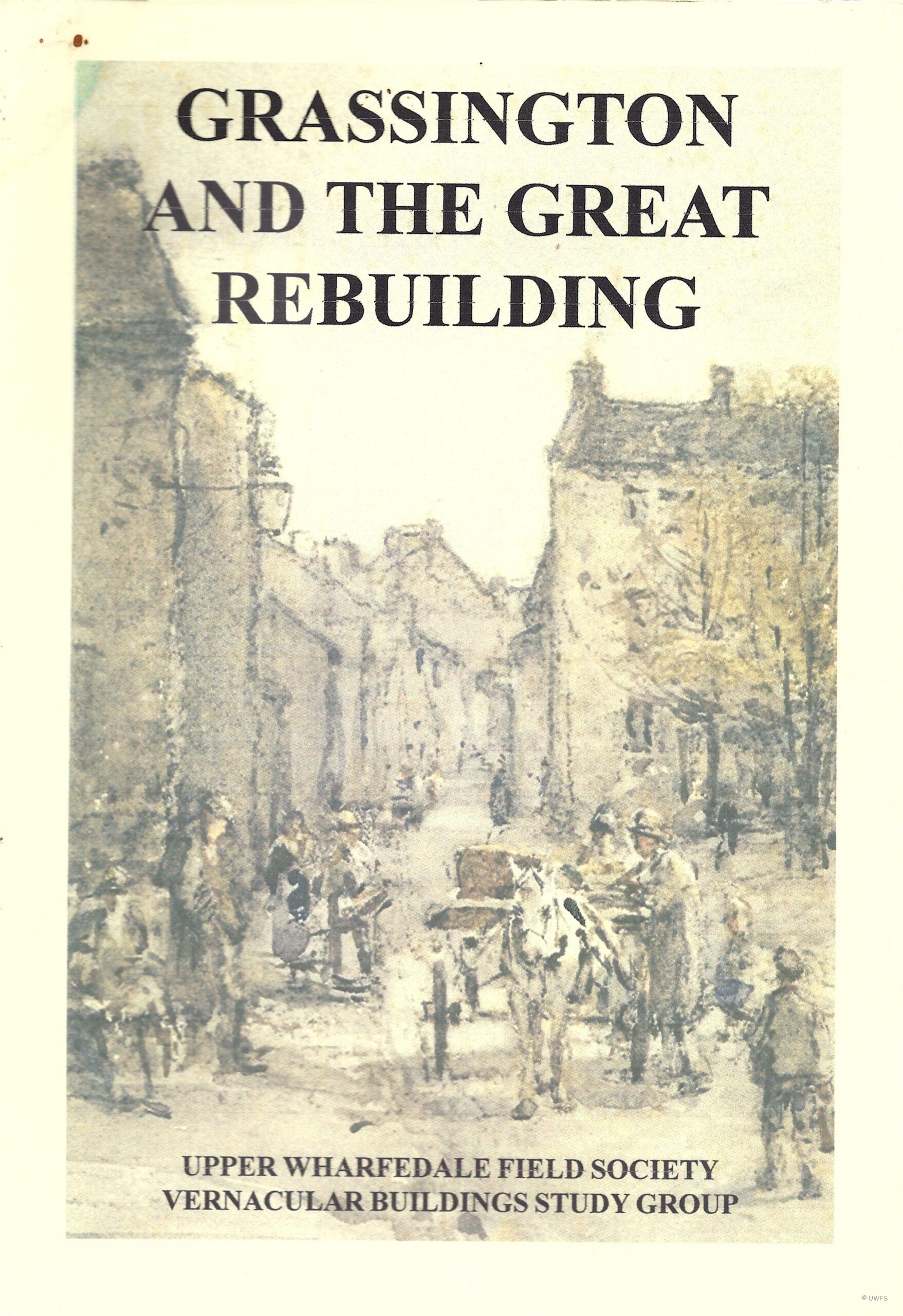We took another opportunity to study Skipton’s history, guided by Sue Wrathmell (Joint Chair of Skipton Civic Society) and organised by Rita and Ian Clark. Sue’s expertise in history and buildings gives us a valuable insight into the town’s historic past. The earliest area is the north end, its height being important, where the prominent Norman Castle evidently occupies the site of a prehistoric settlement and of Roman occupation.

Springs Canal, Skipton.
Photo Phyllida Oates.
The medieval-founded parish church is also considered to have been built on a Saxon religious site. Eller Beck was always an important feature too, where the High Corn Mill is sited and dates back to 1310. Original access routes converged here; and the town’s merchants, therefore, emanated from this area, progressing to the granted medieval market place with burgage plots, ginnels, alleys and yards, which developed the thriving High Street. Springs Canal was constructed in 1797 to directly link the sinuous Eller Beck with the
Leeds Liverpool Canal, initially to carry limestone out from the quarries behind the castle, and the great mills were established. The town spread southwards from the market, into 18th century trade, hospitality and prosperity. We had an interesting view inside ‘The Devonshire’ public house in Newmarket Street which had been the Duke of Devonshire’s 18th century Town House.


